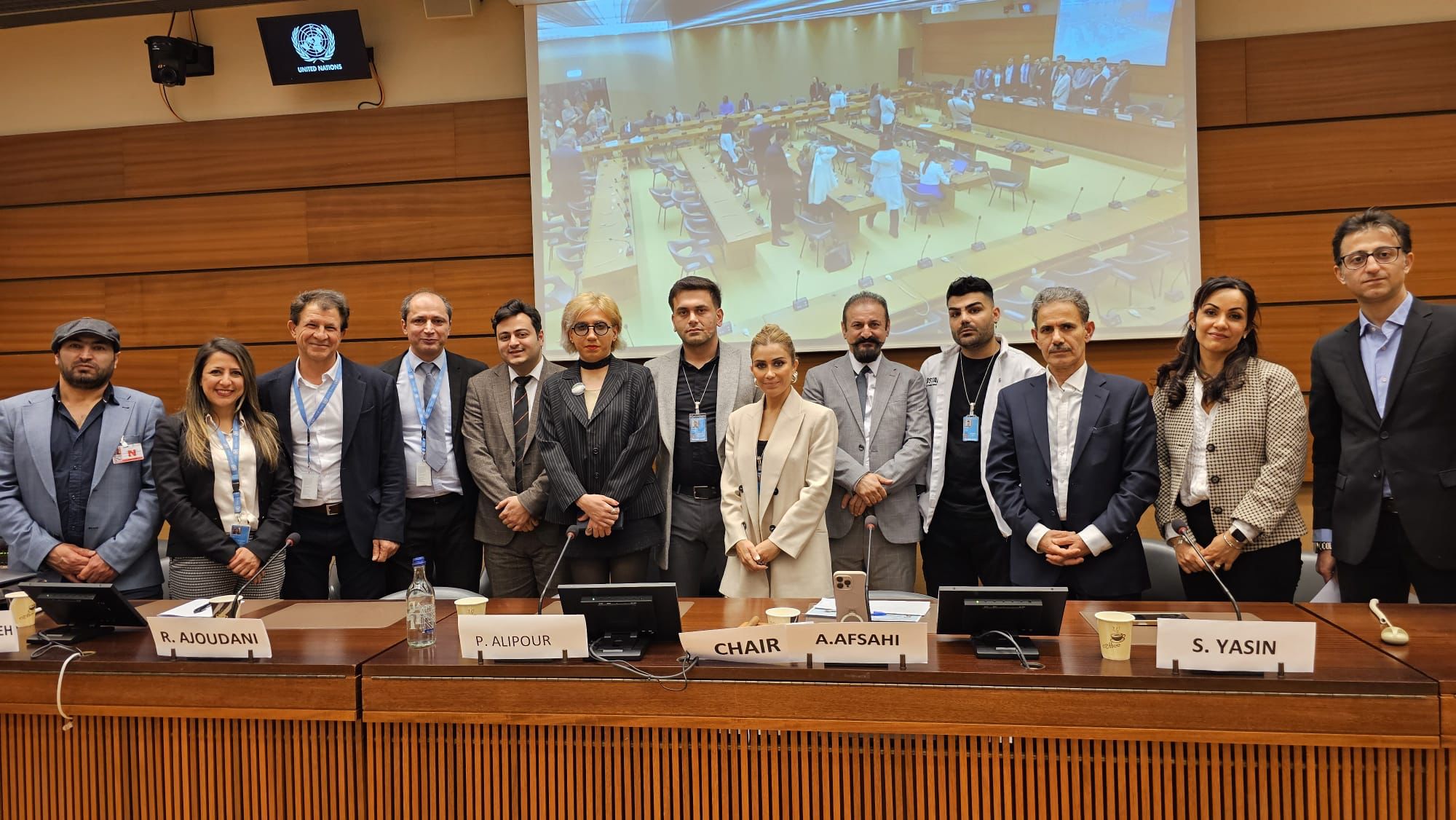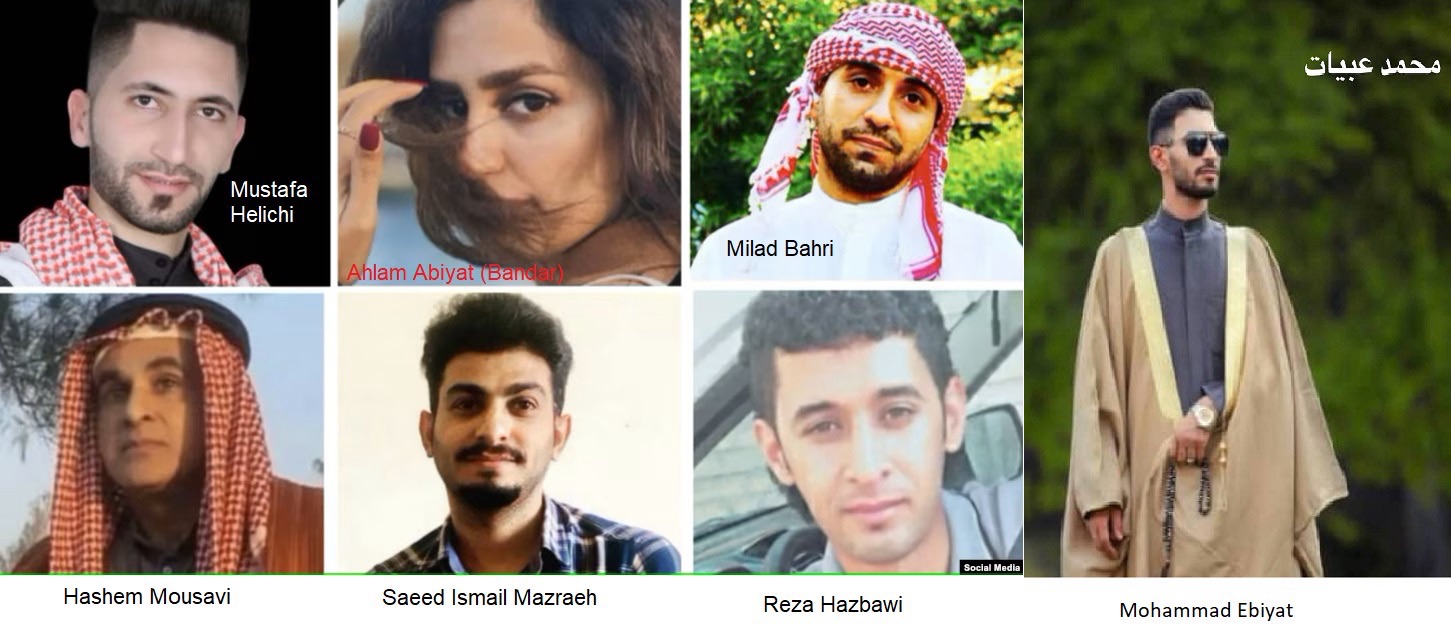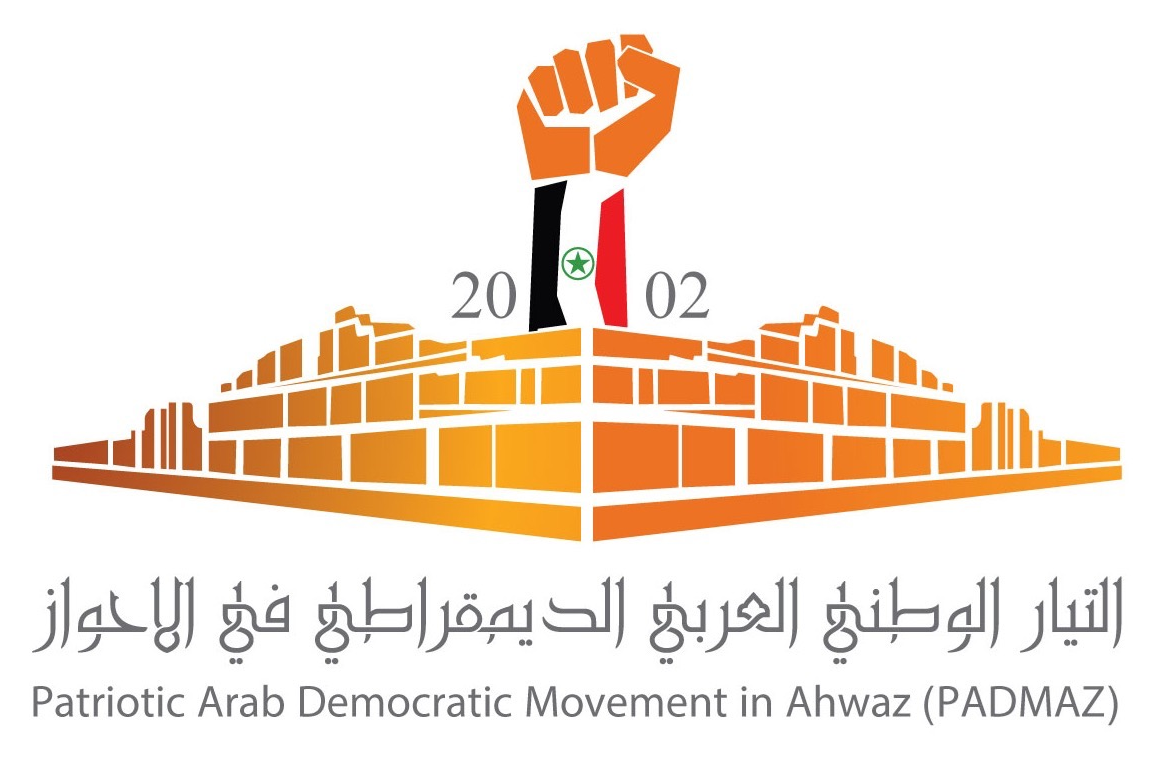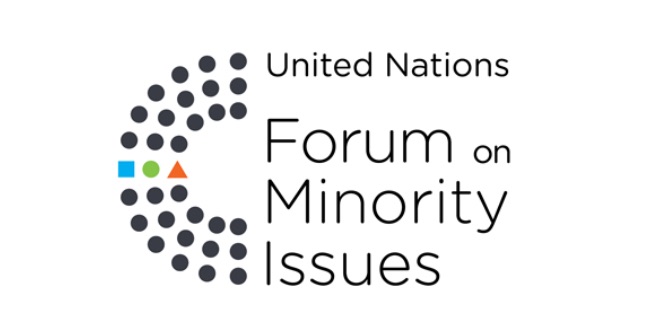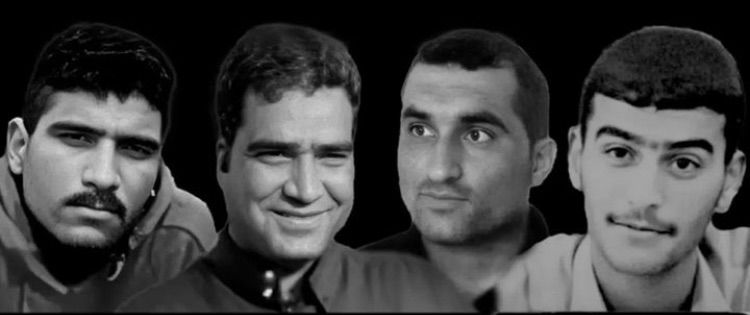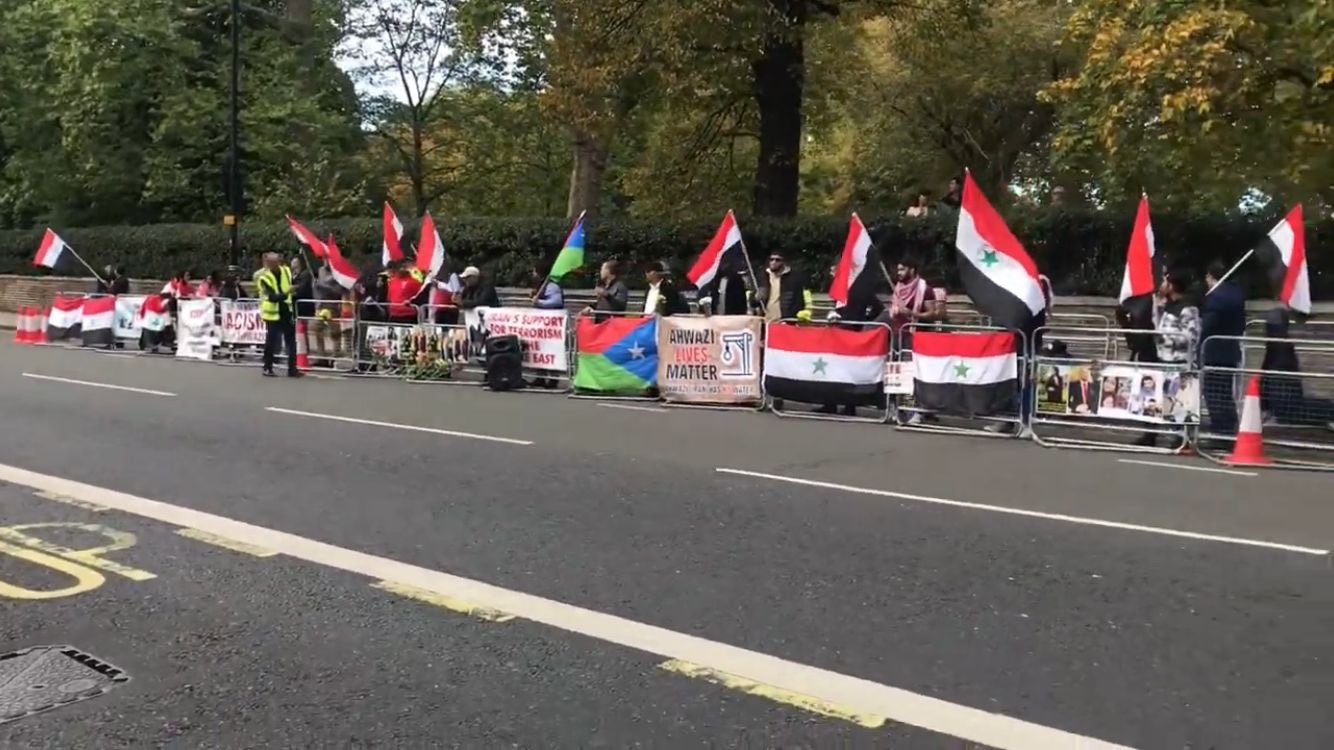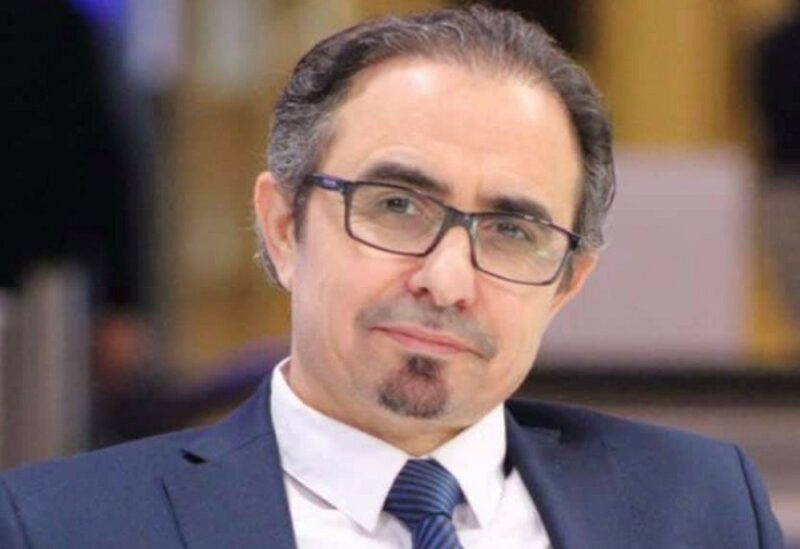Land confiscation and house demolition in Ahwaz
A report by
Mahdi Hashemi
In the past week, the Iranian central government announced the confiscation of over 40,000 hectares of land from Arab farmers in the Jufair area of western Ahwaz. This land will be repurposed for new projects owned by the IRGC and its affiliates.
In light of this, PADMAZ has decided to publish this report to document the known land confiscations affecting the indigenous Arab population of Ahwaz, carried out by the central regime of Iran.

From the Pahlavi period until now, the Ahwazi villages have always been attacked by the ruling regimes and have been destroyed in various ways. In this article, we have tried to examine this problem and its roots.
Physical elimination of villages through development plans with a security-based agenda:
Since Iran’s domination of the Arabian Ahwaz region in 1925, several so-called development plans have been implemented in various parts of the Ahwaz region. Until the end of World War II, these projects focused on the development of oil facilities such as the Abbadan refinery and other oil facilities in the south and north of the Ahwaz region. After World War II and at the beginning of the fifties, at the same time as the so-called development plans of the country and the implementation of industrial and agricultural projects in the Arab areas around Sousse to Shushtar, dozens of villages were completely destroyed by the central government. The residential and agricultural lands of these villages were confiscated in order to establish a sugarcane project in Al-Sab’a (Haft Tappeh), a sugar and paper factory, and several other joint agricultural and industrial projects of Iran and abroad. The Arab villagers, whose villages had been destroyed, were housed in settlements so that the first phase of the operation to destroy the Arab villages in Ahwaz could be carried out by the central government.
In addition to the displaced Arab villagers, these newly built settlements became home to the Persian workers and employees of the newly established projects, who had migrated to these areas from the provinces of Isfahan and Yazd as soon as the projects were started. In fact, the Pahlavi regime considered the existence of Arab villages as an obstacle to its planned social and political reforms. As such, it tried to destroy the social system and Arabic culture of the villagers and create a new basic structure for the Arab people in order to be able to overcome the identity roots of these people and facilitate their assimilation. By destroying the villages, which were to some extent out of the regime’s control both economically and culturally, the regime moved the Arab villagers from their villages to the settlements, and settled them economically and socially in the lower echelons of the settlements. The Arab villagers, who used to cultivate their own lands and were subordinate to no one, settled in the new settlements as low-wage workers (in the best case scenario) while their non-Arab immigrant neighbours had superior jobs and enjoyed better economic status. Thus, the regime had to some extent managed to free itself from the semi-independent rural social structures and also to bring them under control in a new situation. The spread of Persian culture and language in the new settlements was one of the main strategies of the Pahlavi regime to unify the culture and erase the identity of the Arab villagers. This was achieved through great efforts within the newly established projects to keep the atmosphere of the new towns under the constant influence of Persian culture, by holding cultural ceremonies of different sorts, and celebrating different symbols of Persian culture and identity and historical illusions.
The seven sugarcane projects, which began in the 1990s, destroyed dozens of villages in various Arab areas similar to what happened in northern Ahwaz. During Hashemi Rafsanjani’s presidency, sugarcane projects were approved in the regime’s parliament as national projects, and dozens of Arab villages were demolished from the north of Shoaibiyeh district to the vicinity of Mohammara (Khoramashahr) town. Many villages around Dez and Shatit (a branch of Karun) rivers as well as those located on the both sides of Karun river along its passages of Ahwaz-Mohammara and Ahwaz –Abbadan were completely destroyed and their agricultural and residential lands were confiscated for Khomeini’s sugarcane project in Shoaibiyeh village, and Dehkhoda, Mirza Kuchak Khan, Amirkabir, Farabi, Dabal Khazaei and Salman Farsi projects.

Physical siege of villages
This strategy was clearly realized in the implementation of sugarcane projects in Shoaibiyeh and Karun coasts on the Ahwaz-Mohammara and Ahwaz –Abbadan routes. In Shoaibiyeh district, Khomeini’s sugarcane project was designed in such a way that a number of Arab villages were besieged by sugarcane fields and their communication with Ahwaz and Shushtar was cut off. In other words, the residents of these villages need to walk along the sugarcane farms for distances of 5 to 10 kilometers in order to reach the communication roads with the mentioned cities. This has become a major problem for these remaining besieged villages, making life difficult for the Arab inhabitants.
A similar problem can be seen for other Arab villages on the coast of Karun on the Ahwaz-Mohammara and Ahwaz –Abbadan routes. In such a way, that the communication routes of these villages to Ahwaz have become more difficult than before the sugarcane projects and have caused serious problems for the Arab villagers.
Seizure of agricultural lands belonging to villages
There are many villages in the vicinity of the seven sugarcane projects whose agricultural lands have been completely or almost completely confiscated by the said projects, while the residential areas of the villages have remained undemolished. The villagers whose agricultural lands were completely confiscated were deprived of the opportunity to survive in the villages and were forced to migrate to the poor suburban areas. Those farmers, who lost the lion share of their lands to these projects, were left with a smaller portion of land which did not suffice to support their families, and this has caused many livelihood problems for farmers in the villages.
Deprivation of villages from basic services
According to the Arab farmers living on the Karun coast on the Ahwaz-Mohammara route, who worked in agriculture before the confiscation of their lands by the Amirkabir sugarcane project, the regime had been opening the dams on their lands and submerging their villages several times a year in the post-war years. Aside from the truth of the matter, when the farmers protested to provincial officials against the flooding of their villages, officials told them, “You and your ancestors were wrong to build your villages next to Karun.” Such statements from these officials are not coincidental, as an examination of the performance of provincial officials shows a similar policy in all of Ahwaz. Unlike what has been done in other Iranian provinces, in the Ahwaz region, the government has taken no action for watershed management and controlling the floods, to protect the villages alongside Karun River. The Arab villages, located along the rivers and sometimes between two rivers, are always left to fend for themselves, against the floods that take over their lands and villages several times a year. In the case of the villages of Shoaibiyeh, these villages are left between the Karun and Dez rivers without even a single bridge. As such, to go to Ahwaz city, the inhabitants of dozens of villages in this area need to return to Shushtar first and take the road from Shushtar to Ahwaz. Over the past decades, many villagers have lost their lives on their way to the cities to get medical (emergency) assistance due to the lack of a bridge over the Karun and Dez rivers, and the long and rough travel paths imposed on them.
Farmers are deprived of modern agricultural services
There are many villages around the rivers of Ahwaz Region, whose lands have remained uncultivated despite the fact that they are only a few kilometres away from the rivers. Some farmers in Shoaibiyeh district tried to overcome this problem at their own expense and despite their lack of engineering knowledge. They tried to dig pools along the way from the Karun River to deliver water to the lands far from the river using electric pumps, but this has failed due to engineering problems.
The state of the lands which are barren despite being located in the vicinity of the rivers, the villages that still use the canals built during the reign of Sheikh Khazal, and dozens of other examples show that the Arab villages have been deliberately abandoned in their centuries old conditions. A closer look at the situation of the Arab villages and the simple but insurmountable problems they face shows that the Iranian regime considers these villages outside its area of responsibility and does not consider itself obliged to provide them with any agricultural services or water supply. This is while, it is this irresponsible and discriminatory regime that, when confiscating the lands of Arab farmers, has introduced the barrenness of the lands along the river, which is itself a direct result of its discriminatory policies, as a sign of the Arabs’ laziness, and an excuse to give themselves the right to confiscate these lands.
Dry rivers and water pollution
The greatest danger that has jeopardized the whole existence of the Arab villagers is the drying up of the rivers of Ahwaz region due to uncontrolled building of dams as well as the transfer of the water from the rivers of this region to the central plateau of Iran. In the recent years, due to the drying up of rivers, the Water Authority and the Agriculture Department have repeatedly banned villagers from diverting water from rivers during the cultivation season in large areas of the Ahwaz region, and in other areas have increased water tariffs per hectare of agricultural land.
The salinization of water due to the influx of large quantities of highly saline effluents from sugarcane projects into the riverbed has caused a large amount of salt to penetrate the lands of Arab farmers downstream. This has led to a sharp decline in fertility and, consequently, a decline in agricultural production. In this regard, according to official reports, the amount of wheat production the Ahwaz region shows a sharp decrease (about half) compared to the previous years.
The drying up of the rivers has also caused the Hur Aladim (Alazim wetland) to dry almost completely. This has left dozens of villages around the wetland, whose livelihood depended on the lake’s water resources, completely depopulated.
In the villages of Mohammara, Abbadan and Mashour (Mahshahr), which overlook the Karun and Jarahi rivers and the Arabian Gulf, severe water pollution and salinity, water scarcity, and the progress of the Gulf’s saltwater into the riverbed have destroyed millions of palms. This has threatened the villages in these areas with complete destruction.
Ahwazi villages are dried at summer

Ahwazi villages are drowned at winters

No supply of drinking water to the villages
According to the official statements by the Islamic Republic authorities, about 1,100 villages in the Ahwaz region do not have access to drinking water. In most of these villages, Arab inhabitants get their drinking water from muddy and polluted rivers, small streams and ponds. The rest of these villages import water by tankers which are very costly for the villagers.
According to statistics, there are 4,015 villages in Ahwaz region, of which only 2,917 villages have access to so-called “safe” drinking water, and 1,098 villages do not have drinkable water. While water is supplied through tankers to some of these villages, the rest of the villages do not have safe drinking water and in consequence deal with serious health issues.
Iran’s security forces during last May reportedly brutally beat, injured and forcibly dispersed Ahwazi protesters for holding a peaceful demonstration in the Gheyzaniyeh rural area 40 kilometers east of Ahwaz city. The protest on Sunday May 24 was held due to increasing water scarcity, which has been steadily worsening for three decades and is now reaching a critical point at which water is increasingly either completely unavailable or is often so heavily polluted that it’s unfit for human consumption or even for livestock and other animals.
Refusal to clear war mines
Along the Ahwaz-Iraq border, there are dozens of Arab villages whose main residents have not been able to return to their villages since the end of the Iran-Iraq war. This is due to the negligence of the authorities in clearing of the lands of the mentioned villages from the minefields. Since the end of the Iran-Iraq war, the government has shown little interest in clearing these minefields.
The security significance of the border strip for the government suggests that the regime does not intend to return the villages to their original owners, and instead is building military and intelligence facilities in the villages so that it can conduct direct military and intelligence operations with political affiliates in the neighboring countries.
Commercial designs on the border strip
The villages on the borders of Mohammara and Abbadan with Iraq are subject to a major free trade zone plan. Vast portions of lands belonging to Arab villagers have been confiscated or are being confiscated by the government. The plan has also put a number of villages in the area at risk of total destruction.
In addition to the above mentioned concerns, the lack of educational facilities and schools in these villages and the lack of proper communication paths should be mentioned. To get to their primary schools, the children of the Arab villagers need to travel long and arduous routes at their own expense. They also need to travel to cities to continue their education in middle and high school.
In general, we can see a unified policy by the successive regimes in Iran towards the Arab villages in the Ahwaz region. The policies implemented by these regimes show that they have always considered the existence of Arab villages as a security threat and have tried in various ways to disrupt the assemblage of Arab villagers and displace them to the outskirts of cities.
Results of some of those racist policies:
⦁ Confiscation of more than 70 thousand hectares of agricultural lands in areas such as Al-Shuaibia, Al-Minaw, Susa and northern parts of Ahwaz to the advantage of companies the most important of which are Iran Cultivation and Manufacture Company – Iran and America Cultivation and Manufacture Company – California Company, DezKar Company, Shell Company, Klassno Company during the reign of Mohammad Reza Shah.
⦁ After the Iranian revolution, more than 135 thousand hectares of lands belonging to Ahwazi farmers in southern part of Ahwaz city and northern part of cities of Muhammara and Abbadan and on both sides of Karoun River have been confiscated. These lands are of the most fertile agricultural lands in Ahwaz, and they all were confiscated with the pretext of setting up the Sugar Canes Project, while the companies instituted on this project belong to the men of the Iranian government and the ruling regime in Iran.
⦁ Confiscation of 47 thousand hectares of Ahwazi Arabs’ lands for the purpose of setting up the project of the disabled of Iraq-Iran war in Jufair near to the Iraqi-Iranian borders.
⦁ Confiscation of more than 25 thousand hectares of Arabs’ lands for the purpose of setting up the project of fish farms in south of the Ahwaz city. These lands were granted to the Persian settlers who were of the newcomers to the territory.
⦁ Confiscation of more than 100 thousand hectares of lands in the east of the Huwaiza town extending to the north of Al-Muhammara city under the pretext of military manoeuvres of the 92 Army, and very obviously the whole of that area is an agricultural land. Several Arab villages there were inhabited by thousands of Arabs who were finally displaced from their lands by force.
⦁ Confiscations of thousands of hectares of agricultural land in cities of Khafajiya (Sousangerd), Huwaiza and Al-Besitin (Bostan) under the pretext of developing the Azadegan oilfields which extend to the Majnoun oilfields in southern Iraq.
⦁ Confiscation of more than 6 thousand hectares of agricultural land in the city of Susa (Shush), and granting them to the military men of the Revolutionary Guard and Ghods Forces. This project is called the settlement of the clergy in the north and northern-east of Ahwaz province. The confidential document of this project eventually leaked out. The document is called the Sardar Rasheed document; and Sardar Rasheed Is one of the senior commanders of the Revolutionary Guard and Ghods Forces.
⦁ In addition, there is the entire demolition of Arabian areas and displacing thousands of Ahwazis under the systematic policy with the purpose of turning the demographic distribution in Ahwaz, such as the demolition of Sepidar neighborhood in the city of Ahwaz in 1998 and displacing the people of this district who are mostly of the lower economic class.
⦁ Beside the policy of land confiscation, a parallel policy against Ahwazis is being practiced by Iranian government which is not less vicious and racist than the former, and that is perverting the main river courses in Ahwaz such as Karoon, Al-Karkha, Al-Jarrahi and other rivers, and stealing the water and pumping it into central Persian areas such as Isfahan, Yazd, and Kerman for the purpose of irrigation. This happens while they deprive the Arab farmers of these waters and make their fight for living more difficult and more frustrating. Moreover, periodically they fabricate floods through the dams that have been constructed for this purpose, in order to demolish the infrastructure of Ahwazi villages, and consequently facilitate the displacement of Arab people and confiscation of their agricultural lands and demolition of Arabian villages and countryside of Ahwaz.
The purpose of all this is the displacement of the farmers from their villages and systematic destruction of their economy and their enrolment in suburban marginalized areas, that are called ”the Arab belt of poverty”; and then besiege of the Arab towns with Persian and/or non-Arab settlements and towns that have been established for this purpose and there are dozens of them, such as “Shirin Shahr” Settlement in the south of Ahwaz city, in the midst of the villages that have been destroyed for The Sugar Cane Project and fish farms. This settlement is designed for more than ninety thousand people as a first step to be widening. There is also the giant “Ramin” settlement in the north of Ahwaz city, which is built for more than one million settlers from the non-Arab newcomers to the Territory.
Marginalization of “the Arab belt of poverty” is a deliberate and planned process, where poverty, addiction, crime, and all kinds of structural imbalances at the level of cultural, social, and economic structures spread widely. Living on the margins of the society is a normal secretion of these inhuman policies. Of the most important implications of this policy are the environmental disasters, water pollution, increasing salinity in the land, environmental pollution and spread of infectious diseases, and all these complications are mentioned in the report submitted by ”Milan Kothari”, United Nations’ envoy to the province, on 2005. In this report he describes these policies as catastrophic for the indigenous Arab people of Ahwaz.
In his report, following a visit to Iran in July 2005, the UN Special Rapporteur on the Right to Adequate Housing, Milan Kothari, drew attention to “neglect” and the “uneven distribution of development resources from the national authorities in Tehran.” In some poor neighborhoods of Ahwaz, he had observed:
“… a complete lack of basic services impacting negatively on the populations’ health status, in addition to contributing to severe security problems. Most poor neighborhoods were unpaved, open-air sewage was sometimes observed and uncollected garbage blocked streets, obstructing traffic and access from the outside in case of emergencies.”
The Special Rapporteur also pointed out that:
“… lands traditionally cultivated by Iranian Arabs, which were expropriated by the Government for remarkably low prices, in order to provide space for development projects and plantations, such as the Dekhoda sugar-cane project. The affected population had no access to legal remedies to challenge the legitimacy and legality of the expropriation orders.”
As results of the mentioned Iranian policies around half a million Arab people have lost their farms and homes and moved to the marginalized areas around Ahwaz city. There are more than 22 such marginalized areas around Ahwaz city, were based on the Iranian official statistics 99% are Arabs and live in deep poverty and harsh life conditions. These marginalized districts are: Sayyahi, ShelangAbad (Alawi), Razmandegan, Goldasht, Golbahar, Keraishan, Aindo (Ainaldawwa), Mallashiya, Chenaiba, Jangieya, Kut Abdalla, Kanteks, Ghala’t Chana’n, Kooya Taher, Manba’ Ab, Hasirabad, Zergan, Zowiea1 , Zowiea2, Lashkarabad,… .
Tens of thousands of Arabs who missed their home in northern areas of Ahwaz region, live in marginalized areas around Susa and Shoostar and Dezful. And the people from south of Ahwaz region live in the marginal districts around Ma’shoor and Abbadan, such as Koora, Jarrahi and other districts.
More than hundreds of thousands of Arabs who left Ahwaz province due to the Iran-Iraq war could not move back since the regime is not willing to clean their villages from war mines.
More than 40 villages around AlAzim marshland have been abandoned due to the environmental crises caused by the Iranian projects of diverting the water of rivers to the central cities of Iran which resulted in total drying of the rivers and marshlands in Ahwaz.
The following are some of the recent house demolitions committed by the Iranian authorities in Ahwaz.
⦁ In 1998 Iranian authorities demolished a whole Arab district in Ahwaz city, called Sepidar district. This boy explains how the Iranian forces attacked inhabitants including his father & mother and demolished their home
⦁ The Ahwazi people demand the United Nations to stop the Iranian policies for systematic silent ethnic cleansing by drying villages in summers and drowning them in winters to force inhabitants to evacuate their homes.
⦁ In 2012 two Ahwazi brothers Musa & Ali Fazeli were killed by the Iranian forces when they resisted the confiscation of their land in Abdelkhan 30km southern Susa (Northern Ahwaz).
⦁ April 13th 2013, the Iranian forces attacked Chenaiba district in Ahwaz city and demolished homes of Arabs. Mortez Sowiedi a 15 year old boy was killed while resisting the demolition of his parents’ home.
⦁ April 21st 2013, inhabitants of Howaiza city demand the Iranian president to stop confiscation of Arab lands, done by Azadegan oil company & Maskane Mehr housing organization
⦁ Sep 6th 2013, the Iranian forces attacked Shaiban city in north Ahwaz and demolished farms and homes of Arabs. 8 members of an Ahwazi family were injured due to resisting the demolition of their homes.
⦁ Sep 2014, Ahwazi women stand against the Iranian machines which were demolishing their homes. The woman says: I have 5 children where shall I go, you should kill me first before demolishing my home
⦁ Nov 16th 2014, Iranian forces attacked Farhangian district in Ahwaz city and demolished many homes of Arabs. People resisted the attack and many stayed in their homes to resist the demolition.
⦁ During Nov-Dec 2014, the Iranian forces demolished about 10 Ahwazi homes in Ahwaz city and outskirts of Ahwaz in order to clean up the “prestigious” areas of the settlers from marginalized Arabs.
⦁ Jan 18th 2015, the Iranian forces attacked “Shahrake Ahwaz” in outskirts if Ahwaz city and demolished homes of Arabs. During this attack inhabitants were injured and arrested.
⦁ Feb 16th 2016, the Iranian forces attacked Masha’li district in Ahwaz and demolished several homes belonging to Arabs.
⦁ March 11th, 2016, Ahwazi farmers demand the Iranian government to stop confiscation of more than 40 thousands hectares of their agricultural lands and stop Iran Revolutionary Guards from confiscating these lands for the benefit of the settlers.
⦁ Dec 6th 2017, the Iranian forces attacked Ahwazi women working in their agricultural lands, in Jalizi village in North West of Ahwaz province, to force them evacuate their lands. Military Etka organization is responsible for confiscation of more than 4000 hectares and the attack was done for the confiscation of yet another 2000 hectares.
⦁ July 14th 2019, Iran regime destroys homes of Ahwazi people in Boroomi districts in outskirts of Ahwaz city (13km away).
⦁ August 21st 2020, the Iranian agents attacked Nakhilat (Abolfazal) village in the outskirts of Ahwaz city and demolished some homes of Arab inhabitants. The regime is planning to destroy the whole village in which more than 300 Arab families have been living for more than 4 decades and been cultivating these lands for hundreds of years.


